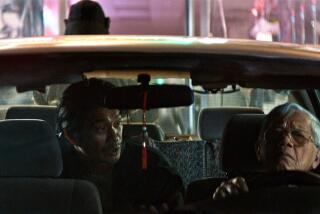Photos a Treasure Trove for U.S. Analysts : Missing: After years of working with little more than frustration and forgeries, opening of Vietnamese archives suddenly provided mother lode of the real thing.
- Share via
WASHINGTON — In a large, windowless vault in a high-rise building in suburban Virginia, eight analysts from the Defense Intelligence Agency are peering into computer displays showing grisly photographic images of crash sites and corpses, of identification cards and of prison compounds for clues to the fates of missing American servicemen.
Whirring electronic scanners search the images for duplicates already in Pentagon files. Trained eyes, some of which saw the horror of war in Vietnam themselves, scan for telltale or false shadows, for recognizable landmarks, for the youthful faces that have become familiar to them from faded identification cards and lovingly maintained family photos.
It is a sleuth’s job that brings together high technology and archival research, and combines the rewards of unraveling a mystery with the pain of knowing that most of the discoveries will dash hopes families have clung to for decades.
After years of working with little more than frustration and forgeries, the opening of Vietnamese archives has suddenly provided U.S. intelligence analysts a mother lode of the real thing.
Spread out across a large working table and blinking out from computer screens, the photographs are being duplicated, enlarged, enhanced and, yes, admired by analysts who are sifting through them.
“They have a real sense of immediacy to them,” said one Pentagon official. “You can almost see the smoke coming up from the airplane.”
Added another analyst who has handled a number of forgeries from Vietnam, “These photos are nothing like that. These are clearly different and very realistic. It would be hard to forge this many photographs where they are clearly identifying Americans like that.”
Like a military watch-center anywhere, the vault has its bank of clocks that tell the time in Hanoi, Bangkok and Honolulu. Those are the mileposts through which these photos have passed on their way to the Pentagon.
In Honolulu, duplicates of the photographs have been fed into computers at the U.S. Army Central Identification Laboratory and at Joint Task Force Full Accounting, where the military’s forensic specialists are supporting the Pentagon’s effort. There, pictures of bodies and of identification cards are being checked against the military’s medical and administrative records.
Knowledgeable Pentagon officials said all the photographs are black and white, and most were taken by the Vietnamese military.
Some are useful in their own right. Others may fill a void in a picture-puzzle of evidence. Still others will provide fresh leads about previously unknown crash sites or grave areas.
The material, said one analyst, has added new dimensions to the work of U.S. analysts.
For years, they have built their cases on a meager combination of intelligence from U.S. military files and leads from often-unreliable tipsters. Suddenly, they have the view from the other side.
And there is promise beyond any documentary evidence, Pentagon officials said.
U.S. investigators are bound to find more clues next month when they begin to interview people in Vietnam who dealt with downed or captured Americans.
The Vietnamese government is now collecting such names for use by investigators.
“There’s a lot of leads that will be mined out of these” documents, said one analyst.
Among the most fruitful are those provided by four photographs of service identification cards. In several cases, a Pentagon spokesman said, the existence of an ID card, purportedly taken off the body of an American, has begged the question: Where are the remains and why have they not been returned?
Are the analysts surprised by their new bounty?
“Hell, no,” said one. “I’ve known all along the Vietnamese had all these records. I’m just tickled to death that we’re finally getting at them.”
More to Read
Sign up for Essential California
The most important California stories and recommendations in your inbox every morning.
You may occasionally receive promotional content from the Los Angeles Times.











